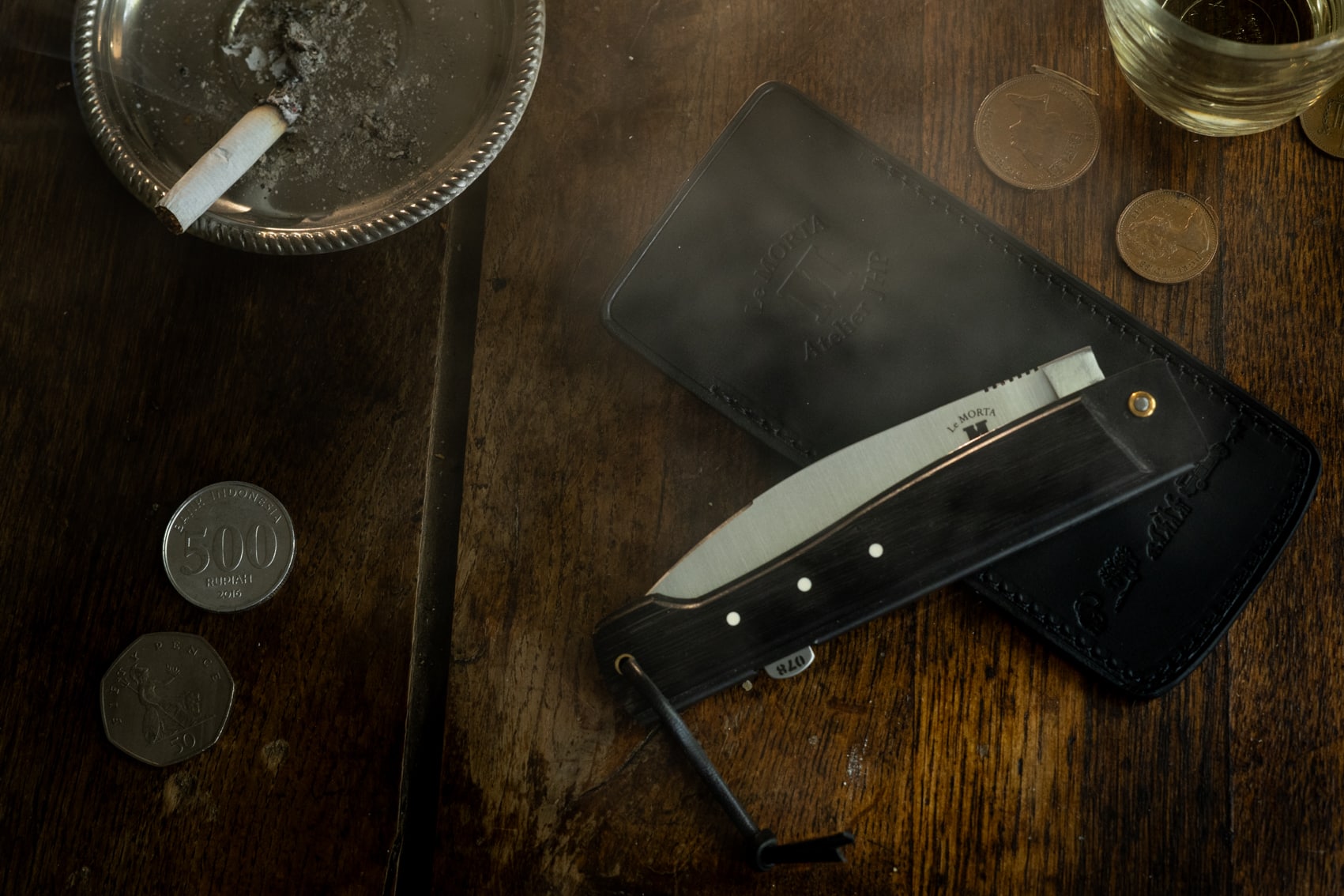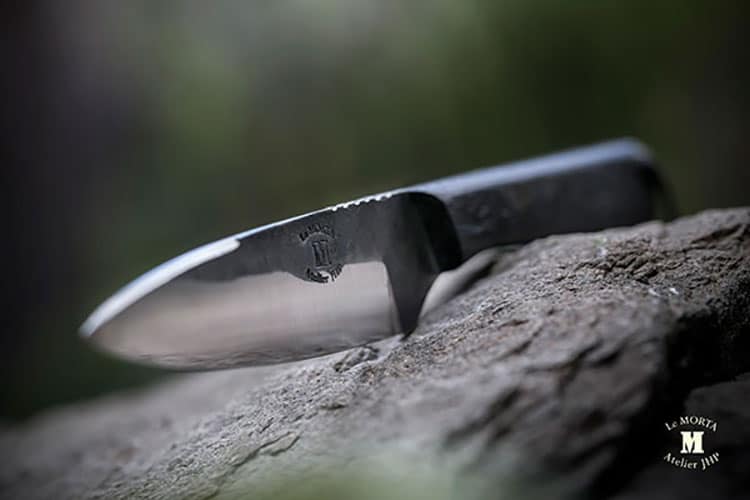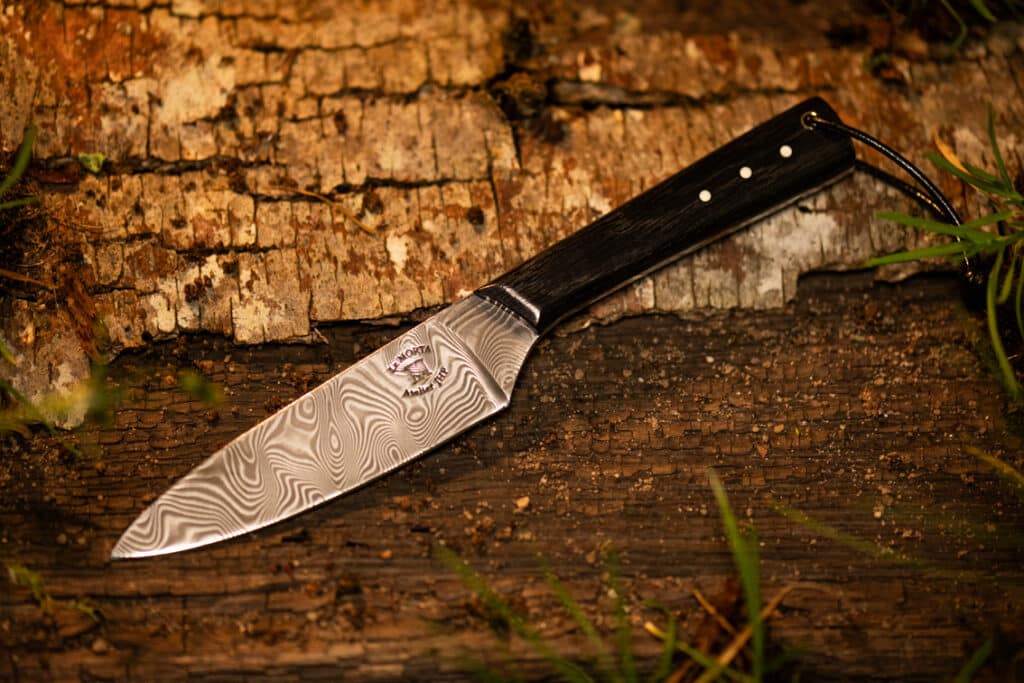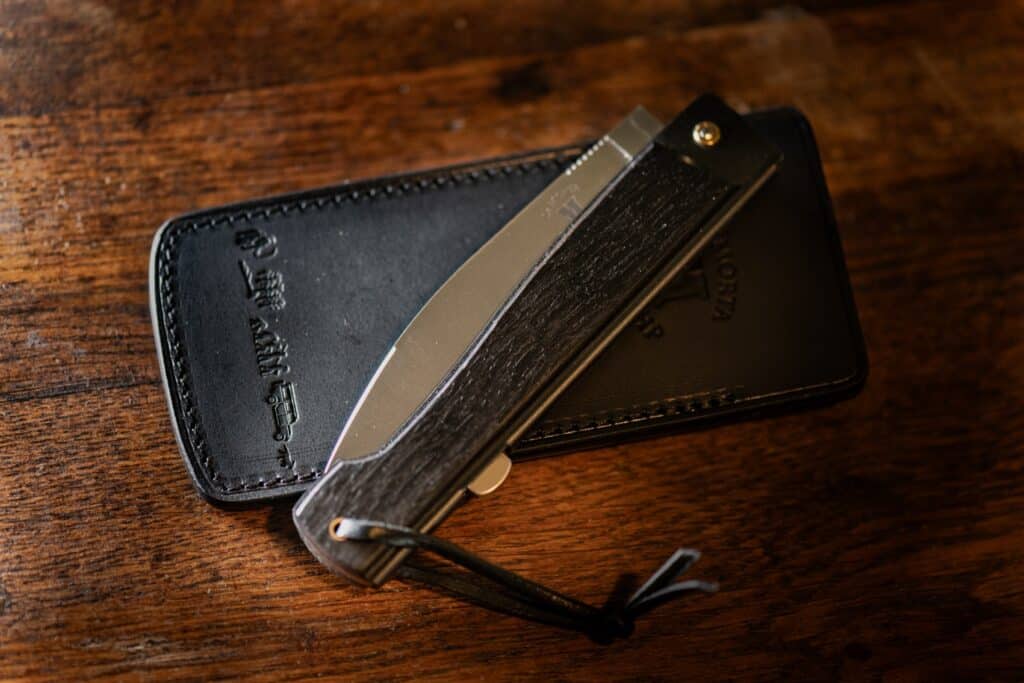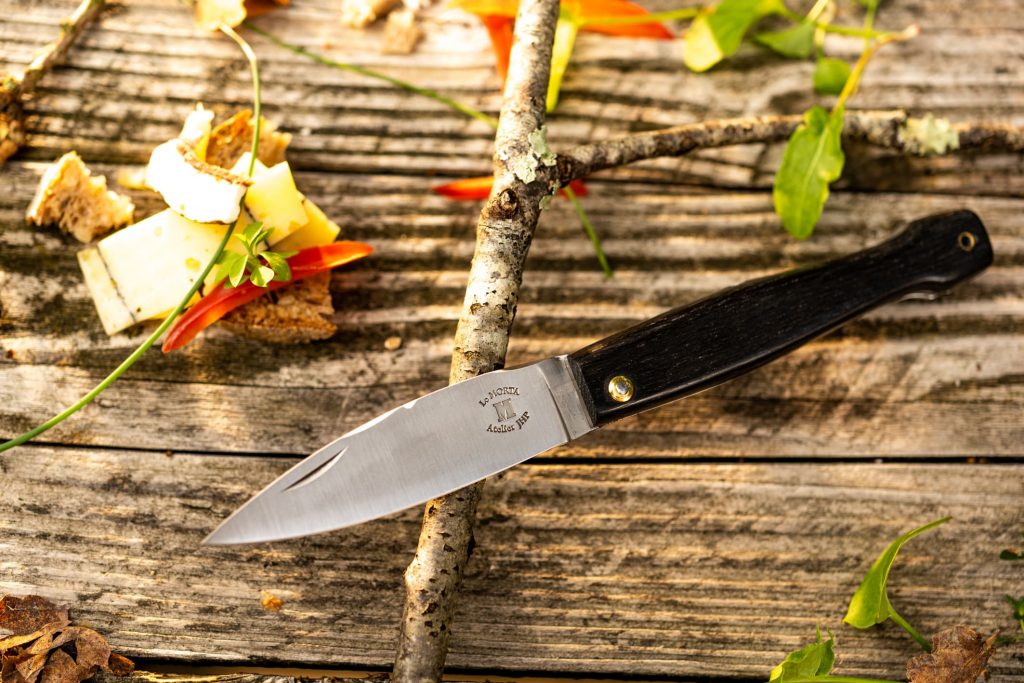At Couteaux Morta, we’ve seen firsthand the artistry and care that goes into each of our knives. Crafted from the unique Morta wood, our knives are not just tools but pieces of history and craftsmanship. In this article, we want to share with you the essential knowledge of when and how to clean and sanitize your knife. Whether it’s a kitchen knife or a pocket knife, proper care is crucial for maintaining its quality and ensuring food safety. Let’s delve into why, when, and how to keep your Couteaux Morta knife in pristine condition.
Why is it important to clean and sanitize your knife?
A knife is more than just a cutting tool; it’s a critical component of kitchen hygiene and safety.
Regular cleaning and sanitizing prevent the buildup of bacteria and food particles, which can lead to food poisoning. For a knife like those from Couteaux Morta, which combines functionality with aesthetic beauty, keeping it clean also preserves its unique characteristics and longevity.
Thus, sanitizing a knife goes beyond just cleaning. It involves eliminating microorganisms to a safe level, ensuring that your knife doesn’t become a vehicle for cross-contamination.
When you use a knife to cut raw meat and then use the same knife for vegetables, without proper sanitization, you risk transferring harmful bacteria, leading to serious health issues.
When must a knife be cleaned and sanitized? 🔪
After each use
The golden rule for knife care is to clean and sanitize it after each use.
This practice is crucial, especially in a kitchen setting where the knife comes into contact with different food items. It’s not just about wiping off visible food particles; it’s about ensuring the knife is thoroughly sanitized to prevent any risk of cross-contamination.
Recognizing signs of contamination
Sometimes, it’s not just about routine cleaning. If you notice any unusual stains, smells, or residues on your knife, it’s a clear sign that a thorough cleaning and sanitization are needed.
Special consideration for different foods
Certain foods like raw meat, fish, and poultry require more stringent cleaning protocols due to their higher risk of bacterial contamination.
After using your knife with these foods, it’s essential to clean and sanitize the blade and handle meticulously to ensure complete hygiene.
How should you clean your Couteaux Morta knife? 🧼
Regular cleaning not only maintains the knife’s functionality and appearance but also ensures food safety.
A well-maintained knife, especially one crafted with unique materials like Morta wood, can last a lifetime.
Step-by-step cleaning process
- Rinse and wash: Start by rinsing your knife under warm water to remove any loose food particles. Then, using mild soap and a soft sponge, gently clean the blade and handle. For Couteaux Morta knives, it’s crucial to avoid abrasive materials that can damage the Morta wood and the blade’s finish.
- Handle with care: Pay special attention to the handle, especially if it’s made of Morta wood. This unique material requires gentle handling to preserve its integrity and appearance.
- Rinse again: After washing, rinse the knife thoroughly under clean water to remove soap residue.
- Dry immediately: Use a soft, dry cloth to completely dry the knife. Moisture can be detrimental to both the blade and the Morta wood handle, so ensure no water is left.
- Storing your knife : Once clean and dry, store your knife in a dry place. A knife block or a magnetic strip is ideal. Avoid storing it in a drawer where it can get scratched or damaged.
When and how to sanitize your knife?
Sanitizing your knife is a crucial step, particularly after it has been used for cutting raw meat. This process is essential to eliminate harmful bacteria and prevent cross-contamination in your kitchen.
To sanitize your knife effectively while using natural methods, consider the following steps:
– Vinegar and water solution: Mix equal parts of white vinegar and water in a bowl. Vinegar is a natural disinfectant and can help eliminate bacteria without the harshness of chemicals. Soak the knife in this solution for a few minutes, then rinse thoroughly.
– Lemon and salt scrub: For a more gentle approach, especially for knives with sensitive materials like Morta wood, use a lemon and salt scrub. Sprinkle salt on the blade, then scrub with a lemon half. The acidity of the lemon combined with the abrasiveness of the salt helps to sanitize and clean the knife.
Rinsing and drying
After using any of these natural sanitizers, rinse the knife thoroughly under clean water to remove any residue.
Dry the knife completely with a soft, clean cloth. It’s crucial to ensure that no moisture remains on the knife to prevent any damage to the blade or handle.
How can you maintain and sharpen your Couteaux Morta knife for optimal performance?
Regular maintenance of your knife is key to its longevity and performance. Indeed, a well-sharpened knife is not only more efficient in the kitchen but also safer to use.
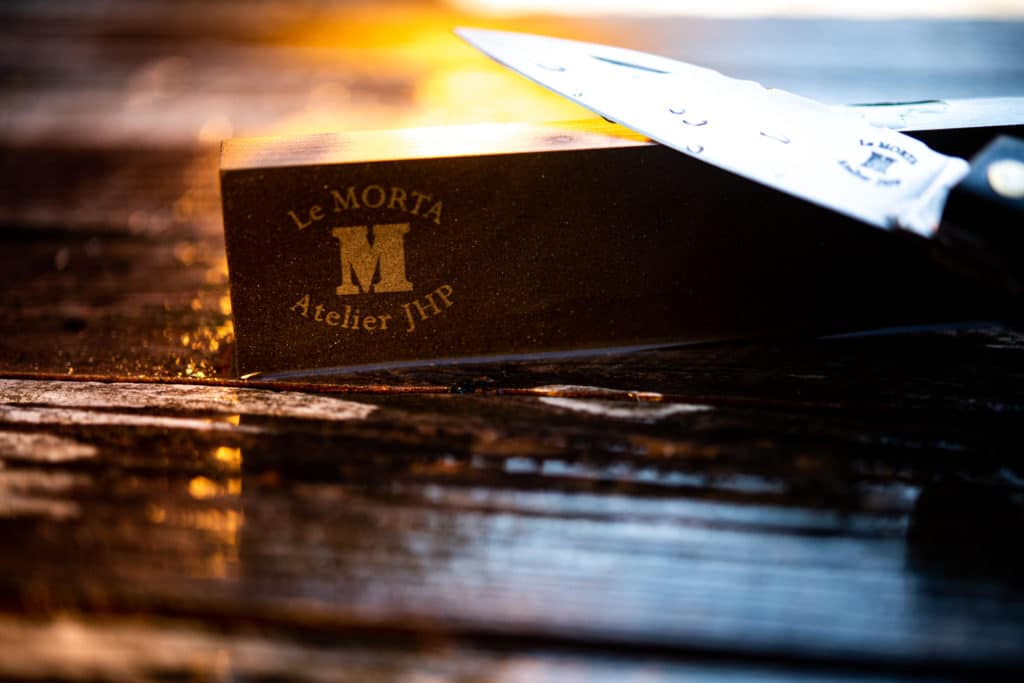
For Couteaux Morta knives, which are known for their exceptional quality and craftsmanship, we recommend sharpening the blade every few months, depending on how frequently the knife is used.
However, maintenance goes beyond just sharpening. It’s important to regularly inspect your knife for any signs of wear or damage. Also, always hand wash your knife instead of using a dishwasher, as the harsh environment inside a dishwasher can damage both the blade and the handle, especially if it’s made of delicate materials like Morta wood.
For those with a wood handle, occasional application of a small amount of mineral oil can help maintain its luster.


